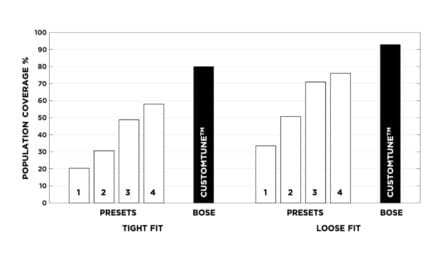By Karl Strom
The recent general session at the IHS convention offered perspectives from four industry leaders on subjects ranging from new technology to Internet PSAPs.
At a 7:30 am time slot—when you sometimes can only get convention attendees moving by threat of bodily harm—an estimated 200 dispensing professionals attended the surprisingly lively general session “The Future of the Hearing Healthcare Market” on September 21 at the International Hearing Society (IHS) Convention and Expo in Phoenix. Moderated by former IHS president and practice owner Scott Austin, BC-HIS, the session featured a panel of four hearing industry executives who presented information about their companies’ approaches to the market and then addressed Austin’s questions on various topics ranging from Apple’s latest “hearing aid compatible” phones to Internet hearing aid sales.

The panelists included Siemens Hearing Instruments President Scott Davis, Oticon Inc President Peer Lauritsen, Amplifon USA President Heinz Ruch, and Starkey Hearing Technologies Executive VP Brandon Sawalich. Each touched on the changing demographics and unique characteristics of hearing instrument users, pointing out how their company’s products and marketing approaches are being modified to appeal to the new generation of Baby Boomer hearing instrument users.
Additionally, each made some crucial points during their opening statements and presentations:
- Ruch, with his vast experience in the retail sales of hearing aids at Amplifon, pointed out that the hearing industry needs to get serious about the physical appearance and upkeep of dispensing offices. He says professionals must view their offices objectively through the consumers’ eyes. We can no longer get away with offering modern, state-of-the-art hearing aids from offices that smack of 1980s (or earlier) decor, or from testing and fitting rooms that remind a person more of a radio repair shop, with tangles of cables and cluttered desktops strewn with disjointed testing devices. Instead, he says there needs to be a consistent and industry-wide message that our businesses/practices offer modern, effective, professional solutions using computer-driven, high-technology, custom-fit products.
- Lauritsen pointed out that hundreds of millions of dollars are spent each year by Oticon and other companies to accelerate our knowledge about what people with hearing loss need on a daily basis for better living. He says that the result has been unique products as well as new advertising messages that do work by conveying the idea of the consumer breaking free from the barriers of their hearing impairment into a better, more communicative, engaging lifestyle.
- Sawalich noted that hearing aid companies and dispensing professionals do not simply manufacture and sell sophisticated electronic-laden pieces of plastic; what is offered is better hearing and communication. In this light, emerging technology, including personal sound amplification products (PSAPs), should not significantly affect our businesses as long as we do our respective jobs. Sawalich noted that with opportunity also comes fear of the unknown. Emerging technologies, such as the new Apple “hearing aid compatible” applications, offer opportunities to help consumers in new ways. He added that there is a lot of technology coming down the road that allows for wireless connectivity, new signal processing applications, and the ability to sidestep engineering problems related to the limited power capabilities and the small size of hearing aids.
- Davis paralleled Siemens’ worldwide branding strengths with the need for dispensing professionals to build their own local brand based on quality service and advanced products. To do this, he says one must be both an effective caregiver and business operator. Davis says emerging trends in healthcare—including increasing transparency for all caregivers (eg, online ratings for doctors) and 1-minute clinics/kiosks in shopping centers and big-box stores—make it increasingly important for dispensing professionals to establish their business/practice’s local brand as the center for hearing healthcare in their communities.





